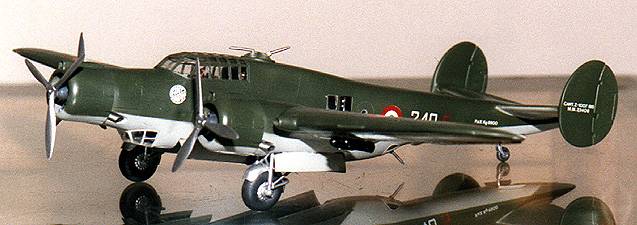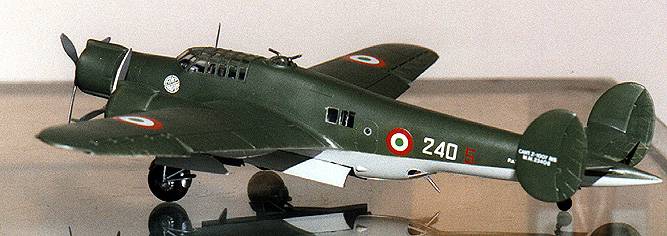
Kit : CANT Z.1007
Scale: 1/72
Kit Number: 006
Manufacturer: Supermodel
Price: $20.95
Media: Injected Plastic
Decals: Three versions, all Italian, one post war.
Date of review: 9 October
Reviewer: Scott Van Aken

Another photo at the bottom of the review
The CANT Z.1007 was one of Italy's most modern bombers at the start of WWII. Along with the SM.79, it was used with some success against the Allies. Built in both single and twin tailed versions, the 1007 was typical of Italian medium bombers in that it had three engines. The main reason for this was the lack of power produced by Italian engines at the time. A bonus was the increased safety of the additional engine.
Supermodel's kit of the 1007 is typical of this company's offerings. Molded in medium grey plastic with fine raised lines and separate control surfaces that do not look at all good unless glued in the neutral or near-neutral position. The aircraft also allows for an open bomb bay, movable upper turret and provisions for underwing bomb racks should you desire.
The engines are realistic enough for the scale, although they could benefit from more detail. Likewise the interior is quite basic comprising the usual seats, instrument panel, and control wheel. Similarly bare is the bomb bay which offers only attachment points for two bombs. There are no delineated attachment points for the bay doors so they are simply glued along the edges.
The kit offered no unusual challenges other than the need to clean up a number of the finer parts. The undercarriage is especially fine and benefits from careful work with a sharp blade. While it looks flimsy on the tree, once constructed, the gear is quite firm and robust. The engine exhausts benefit from drilling out and it is imperative to solidly glue the various machine guns in place after most of the kit is constructed. I did not, and now have the two beam window guns floating around in the interior.
Detail of the fabric control surfaces is actually quite convincing, however the parts are very thick plastic and the ailerons especially show problems with sink marks. Fixing them is impossible without destroying the surface detail so I left them alone. Fit of the clear parts is quite good, but they were a real pain to mask prior to painting. Although there are a number of really neat schemes that this aircraft could be painted in, I wanted a post armistice aircraft and so had to use a rather simple scheme. The aircraft is painted a dark green upper and medium grey lower. The accompanying photos are actually a bit lighter than the model. The paints were mixed to match those in a Squadron book on the Italian AF in WWII. The decals went on very well, despite the semi-gloss paint surface. They were a bit transparent, as can be seen by the number 5 and the red surround to the insignia.
All in all, a good kit and well worth your efforts.
